The Dracaena plant is one of the most popular household plants today thanks to how easy it is to maintain as well as its useful properties like removing toxins in the air.
It might be a little bit overwhelming to choose the perfect Dracaena for your home considering there are over 120 types, so we handpicked what we think are the best types for you.
Here are our picks of the best Dracaena plants:
- Corn Plant
- Madagascar Dragon Tree
- Lucky Bamboo
- Green Zebra Plant
- Gold Dust Dracaena
- Mother-in-Law’s Tongue
- “Variegata” Song of India
- African Dragon Tree
- Socotra Dragon Tree
Our Best Dracaena Plants for You
Having a Dracaena plant at home is good, as it’s easy to maintain and can act as your house’s air purifier. Below are what we think are the best Dracaena plants indoors and outdoors.
Corn Plant (Dracaena fragrans)


One of the most famous types of Dracaena, the corn plant is an easily distinguishable Dracaena thanks to its long curved leaves with a light shade of green adorning their middle parts.
The Dracaena corn plant got its name due to its leaves resembling corn stalks growing out of its stem. It first arrived in North America in the early 20th century and became popular thanks to it being easy to take care of.
They can survive with less sunlight compared to most plants and don’t need too much water to live. Having these traits makes them really good houseplants, as you don’t need to put in too much effort to grow them.
Another positive trait of corn plants is that they’re really good air purifiers. Toxins like those produced by cigarette smoke are easily absorbed by corn plants, which helps keep your house safe especially for kids and the elderly.
They also liven up the atmosphere thanks to the cluster of white flowers they produce which emits a sweet fragrance.
Madagascar Dragon Tree (Dracaena marginata)
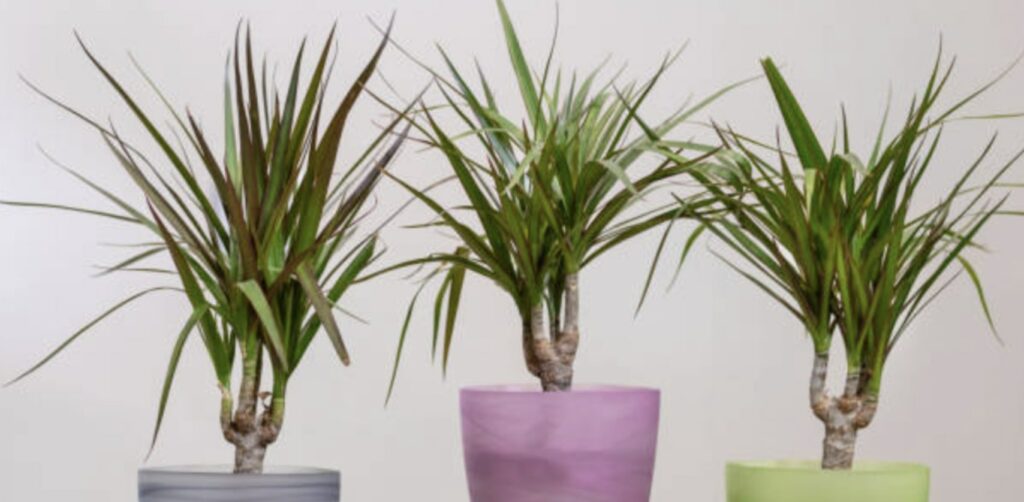

Another popular type of Dracaena, the Madagascar dragon tree is unlike the colossal dragon tree, as it is small and can fit in an indoor setting.
The Madagascar dragon tree is easy to spot thanks to its leaves which tend to be spiky and point upright.
Unlike other Dracaena types, the Madagascar dragon tree has a main stem which separates into smaller stems where the spiky leaves come out.
Another unique trait of the Madagascar dragon tree is that it has different subspecies which sport different colors. Some variants like the Dracaena marginata have purple, gold, and green stripes on their leaves.
As with many types of Dracaena, the Madagascar dragon tree is also easy to take care of and only requires minimum attention.
Their unique look can certainly add a lot of personality to your house, whether they are placed indoors or outdoors. As long as they can get partial sunlight and regular watering, they’ll grow to become one of the best plants in your collection.
Lucky Bamboo (Dracaena sanderiana)
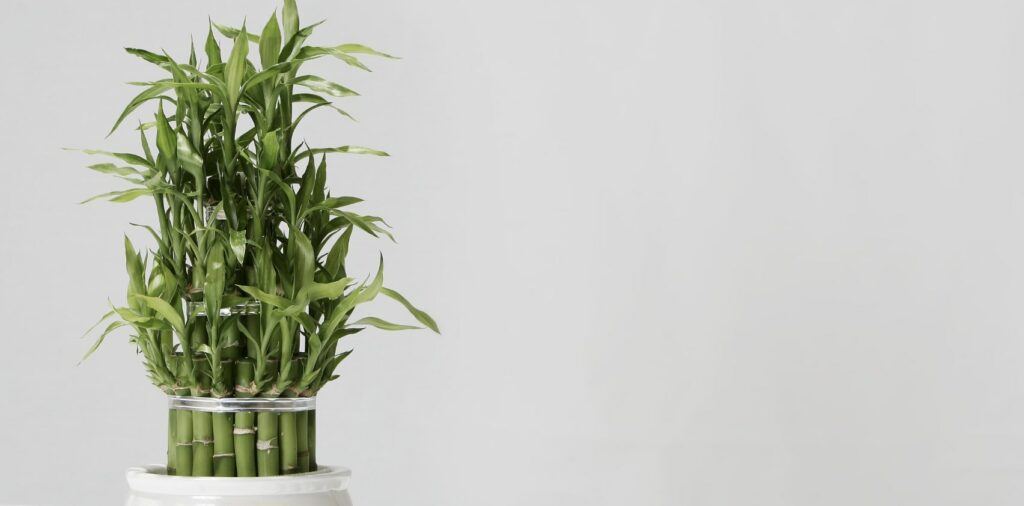

The lucky bamboo is the best Dracaena for homes that only have limited space to work with. It is easily distinguishable thanks to its small size while having thick stems and lance-shaped leaves.
In indoor settings, the lucky bamboo can grow up to 3 feet tall and 2 feet wide. Such sizes make them really good for rooms with limited space and can only accommodate a small pot.
However, if planted outside, they can also grow taller up to 8 feet.
Due to its versatility, the lucky bamboo remains a favorite among homeowners, especially those who can’t allocate too much space for houseplants.
Green Zebra Plant (Dracaena goldieana)
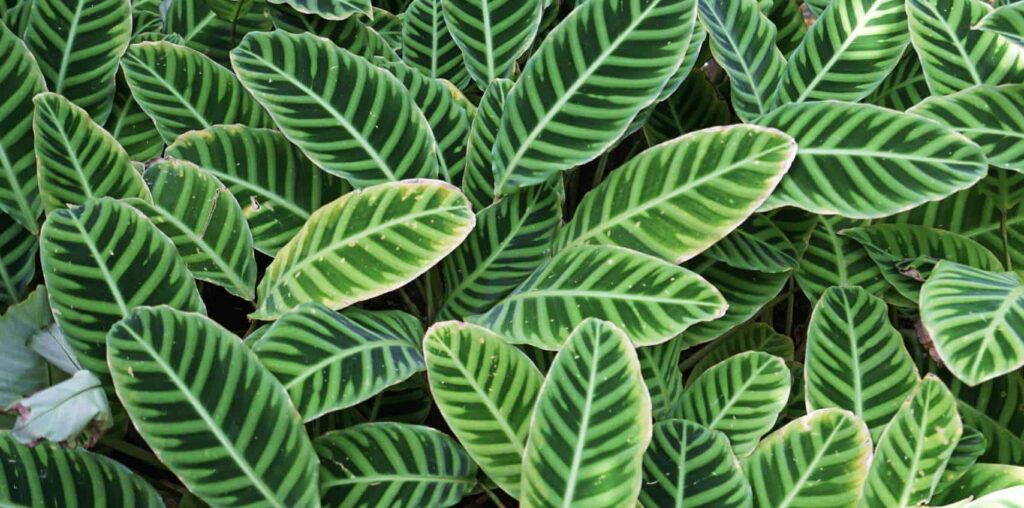

As its name suggests, the Green Zebra is a Dracaena plant which sports patterns on its leaves resembling those of a zebra. A native of the African continent, the Green Zebra can spice up the look of your home.
Its leaves are broad and shiny with cool patterns adorning them. Its pattern changes according to how much sunlight the plant is exposed to.
This is because the Green Zebra prefers shaded sunlight, as it has evolved in the lower sections of the African rainforest.
Therefore, it is actually recommended that you only expose the Green Zebra to limited sunlight to prevent its leaves from wilting due to too much sunlight.
If maintained well, the Green Zebra can definitely be an eyecatcher for your home, as it can provide the rainforest vibe that is quite an uncommon interior design concept.
Gold Dust Dracaena (Dracaena surculosa)
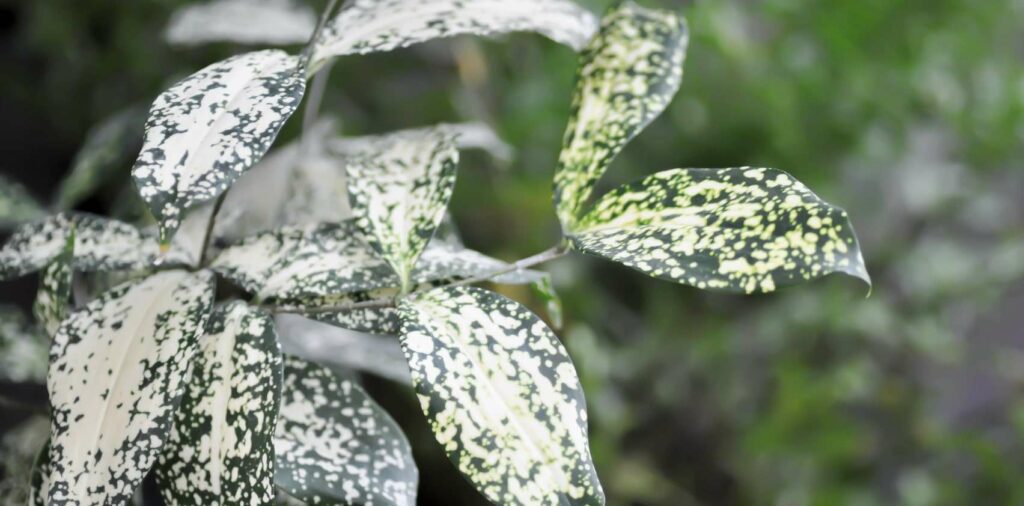

The gold dust Dracaena is a unique type of Dracaena thanks to the oddly shaped spots covering its leaves, which at first glance might look like powdery mildew or fungal infection from afar.
These yellowish spots make it stand out among other Dracaena plants.
These plants can grow up to 4 feet tall, which places them among the smaller types of Dracaena. Such size makes them one of the better choices if you want an indoor plant.
Aside from its small size, the gold dust Dracaena is also a low-maintenance plant that only requires constant sunlight and watering.
Mother-in-Law’s Tongue (Dracaena trifasciata)
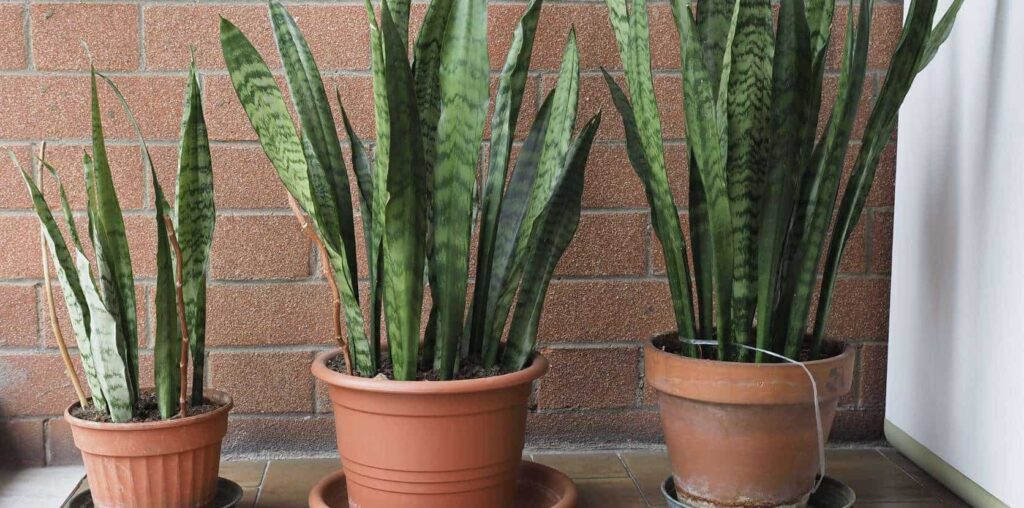

The mother-in-law’s tongue, scientifically referred to as Dracaena trifasciata, is a widely known plant thanks to its distinct leaves which resemble swords sticking out of the ground.
This plant is also oftentimes referred to as St. George’s sword or simply as sword plant due to the distinct shape of its leaves.
It is one of the best Dracaena types for beginners, as it’s not picky when it comes to soil and can live fine with minimal sunlight. However, be careful not to leave it without sunlight for too long, as that may affect its growth.
An excellent trait of the mother-in-law’s tongue is its excellent air-purifying abilities.
Harmful chemicals like formaldehyde can be purified by this plant immediately, and its ability to convert carbon dioxide efficiently can make your house more comfortable.
“Variegata” Song of India (Dracaena reflexa)
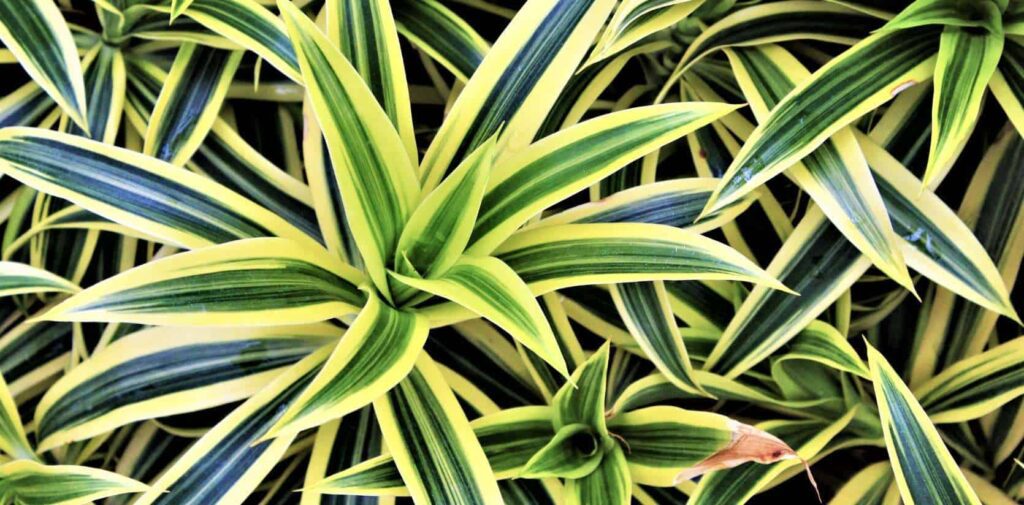

The Song of India “Variegata” is a brightly colored variant of Dracaena that grows in a spiral formation with its sword-shaped leaves extending out from the stems. These leaves have a darker green in the middle with a lighter shade of green on the edges.
Despite its name, the Song of India originates from the coasts of Africa and is used to warmer climates.
The Song of India is one of the bigger variants of Dracaena, with their height reaching up to 18 feet if planted outdoors.
They are perfectly fine in both indoor and outdoor settings, whether planted in the soil or placed in a pot. It is highly recommended that you place them where they can receive filtered sunlight.
A unique trait of this plant is its resilient leaves and stems are resistant to most common garden pests like thrips and spider mites.
African Dragon Tree (Dracaena arborea)
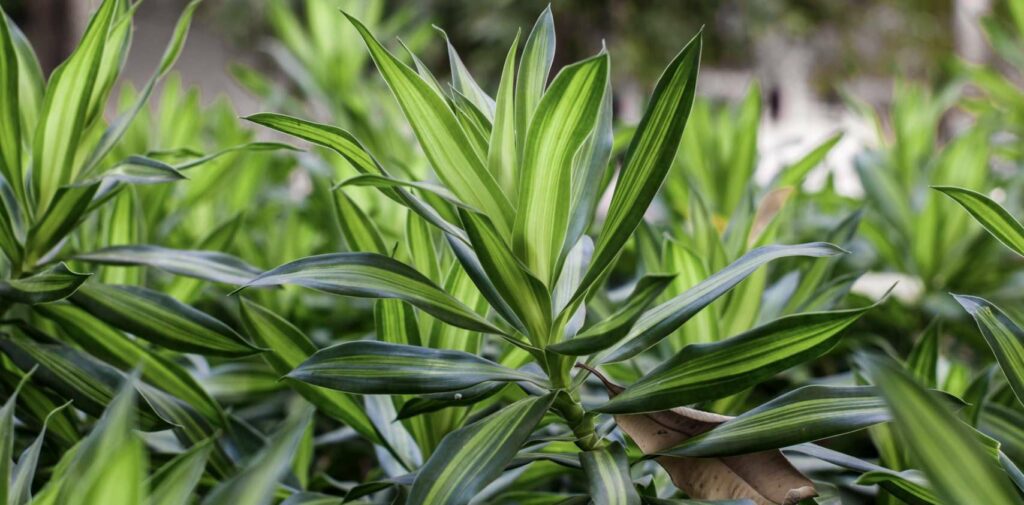

One of the rarer types of Dracaena on our list, the African dragon tree is one of the bigger types, as it can reach a height of 15 feet tall which makes it a great addition for wide spaces.
These plants have stems that resemble those of a rattan. Meanwhile, its leaves are shaped like swords that grow upwards, making the plant look like a broom turned upside-down.
The patterns on its leaves tend to be a shade of yellow-green in the middle with a darker shade of green on the edges. However, the pattern and color hues might vary on each African dragon tree.
Because of its large size, the African dragon tree is perfect for your courtyard or pool landscape. Also, unlike other Dracaenas, the African dragon tree actually prefers to stay directly under the sun.
A good trait of the African dragon tree is its tolerance to drought. It doesn’t need constant watering and can be watered on a monthly schedule with no problems whatsoever.
Socotra Dragon Tree (Dracaena cinnabari)
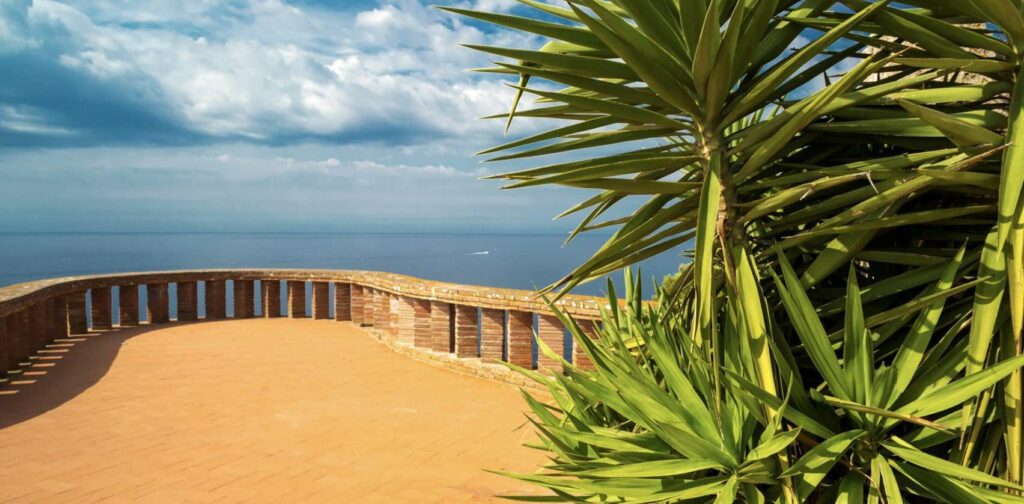

One of the largest types of Dracaena, the Socotra dragon tree is a gargantuan plant that can reach more than 30 feet in its maturity. As such, it is one of the harder types of Dracaena to grow.
Its large size means that it has a very thick stem that separates into smaller ones with thick and dense leaves.
The Socotra dragon tree bears light green flowers which are known to fill the immediate surrounding with a pleasant aroma. When autumn comes, these flowers change into a fiery red color, which can certainly be an eye-turner!
However, despite its impressive qualities, the Socotra dragon tree is one of the hardest Dracaena plants to grow, as it requires a dry landscape.
The soil has to be sandy and have good water-draining qualities before it can accommodate the Socotra dragon tree.
In addition, this plant prefers to be always under the sun, which makes it more suitable for warmer climates like those in the Mediterranean.
When it comes to water, the Socotra dragon tree doesn’t require much and will grow well as long as the soil is moist. Be careful not to water it during the rainy seasons, as rainwater is more than enough for its water needs.
A Quick Guide about Dracaena
Want to know how to take care of Dracaena? Common questions and topics like distinguishing a Dracaena and knowing how to care for it are covered in this section.
Identifying a Dracaena
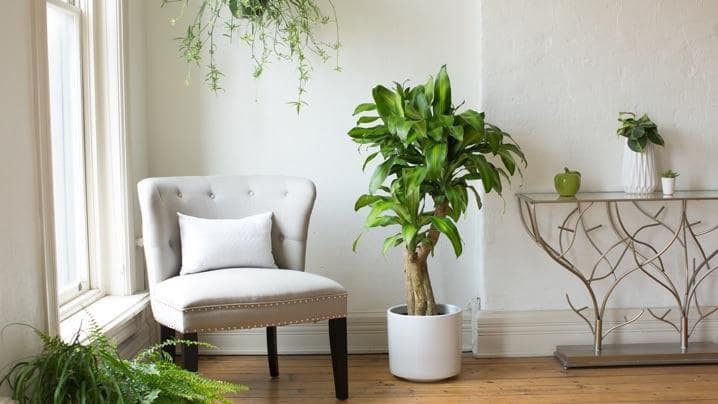

Dracaenas are easily distinguishable by their leaves. Dracaena’s leaves are long and oval-shaped with different shades of green, depending on what type of Dracaena it is.
Some Dracaenas also have leaves with yellowish stripes on the outer edges.
Most Dracaenas also have dense and thick stems, which might give them the look of small trees.
Are Dracaena plants poisonous?
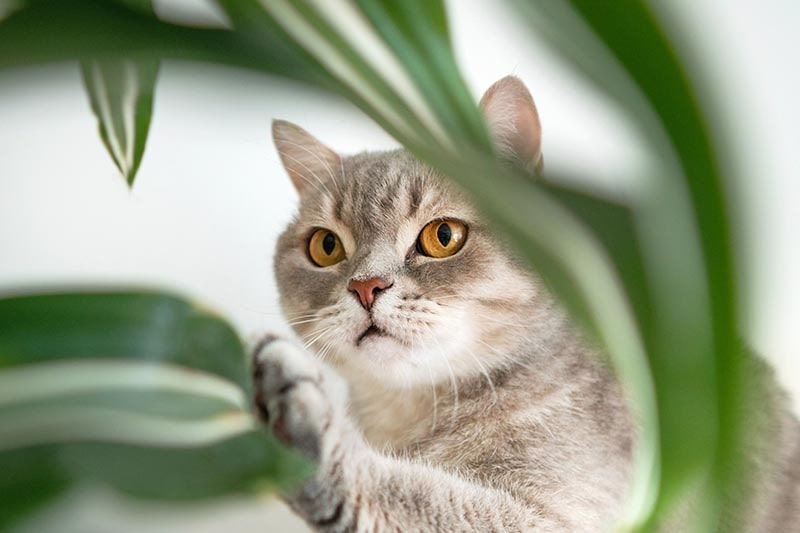

Dracaena plants are non-toxic to humans but are poisonous to common household pets like dogs and cats.
All types of Dracaena have been proven to be safe for humans even for kids. Parents don’t have to worry about their kids being exposed to toxins after accidentally eating Dracaena leaves.
However, for pets, it’s a completely different story. Cats and dogs that ingest Dracaena leaves may experience vomiting with blood, hypersalivation, and anorexia.
Make sure to train your pets well not to ingest any kind of plant leaves before getting a Dracaena to avoid any accidents from occurring.
Are Dracaena sensitive to tap water?
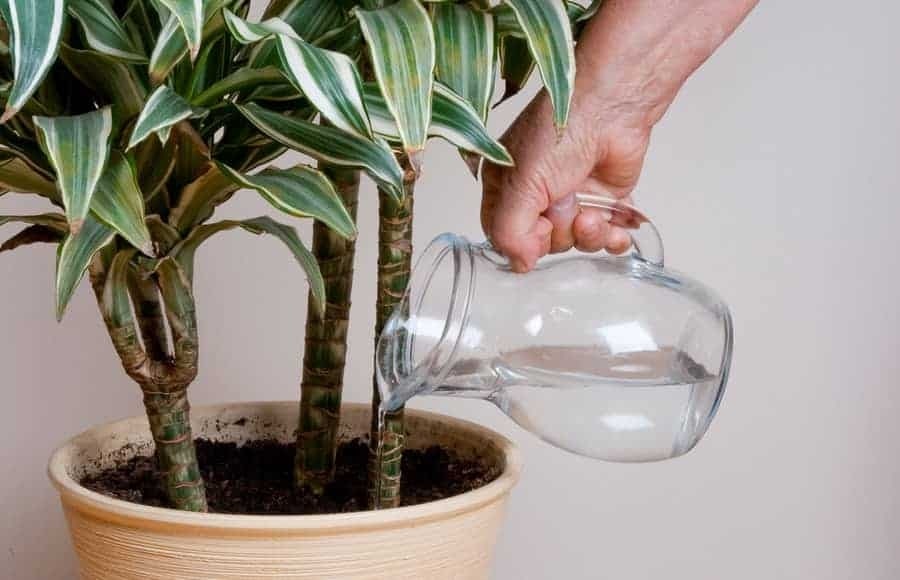

Dracaena is sensitive to fluoride, a mineral used in tap water. While this plant isn’t as high-maintenance as other common houseplants, it can react strongly if the tap water in your area has high levels of fluoride.
Dracaena exposed to high amounts of fluoride will begin to show discoloration on its leaves. Make sure to immediately switch to distilled or purified water to remedy the problem.
Do you water Dracaena from the top or bottom?
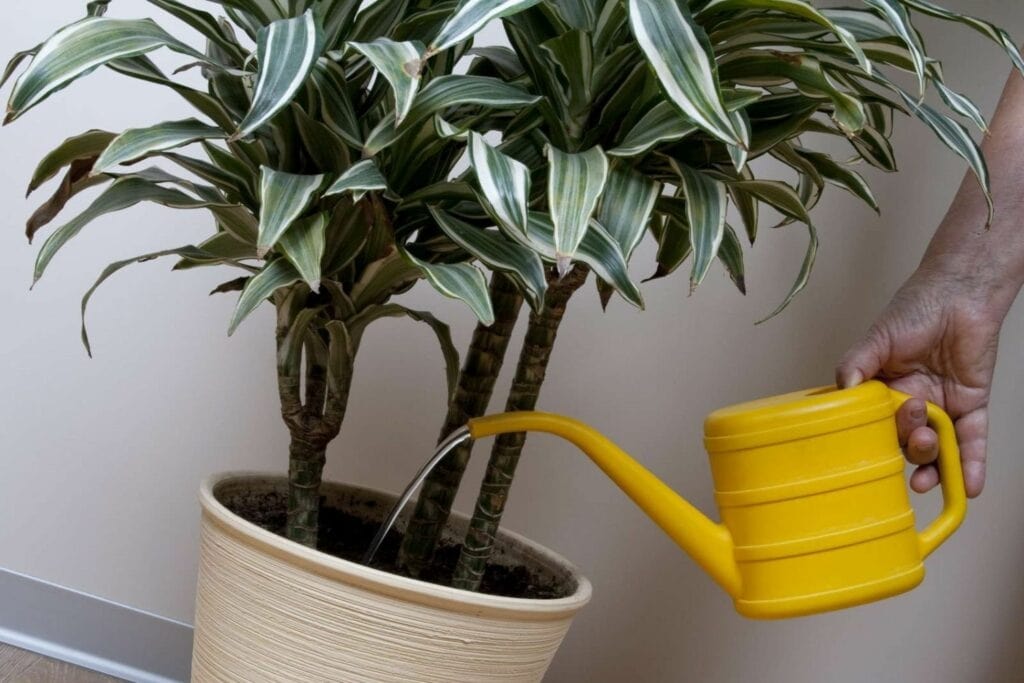

While Dracaena aren’t picky about how you water them, it is still best to water them from the top to wash away salts and minerals in the soil.
Minerals like fluoride are harmful to Dracaena. Thus, washing these away is better for Dracaena plants.
Watering them from the top is easy. Slowly pour water on the soil until the topmost layer is too moist to absorb more.
Dracaena are plants resistant to drought and thus don’t need too much water to survive. Be careful not to overwater them.
As long as the topmost layer of its soil remains moist, then your Dracaena doesn’t need watering.
What kind of fertilizer works best for Dracaena?
Fertilizers containing the 10-10-10 mix (10% nitrogen, 10% phosphate, 10% potash) are enough for Dracaena. Simply add the fertilizer every two weeks to keep the soil nutrient-rich for the plant.
However, there are also general fertilizers available for indoor plants which are quite easy to use and don’t need to follow a schedule. Simply add the fertilizer every time you water the Dracaena to ensure stable growth.
Is a Dracaena plant good for indoor settings?
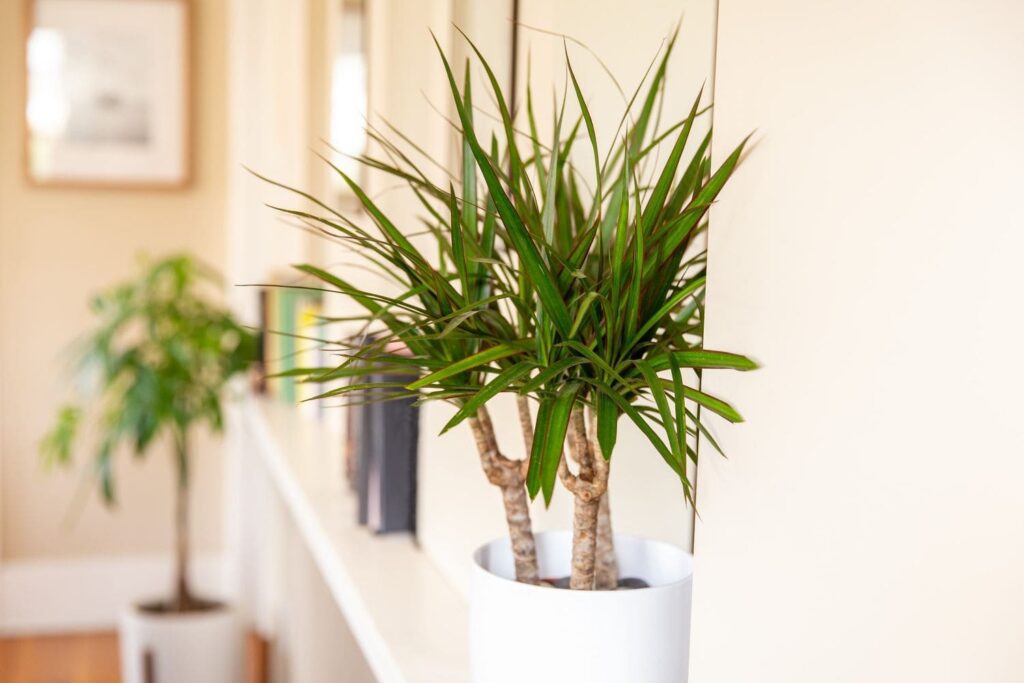

Yes, Dracaena are among the best plants for an indoor setting thanks to their excellent air purifying trait. They can remove almost 90% of toxins in a house within only 24 hours.
Having a Dracaena can be extremely useful especially for households with a smoker, as the plant can immediately absorb the harmful tobacco chemicals before they can affect other residents in the house.
Aside from purifying the air, Dracaena is also a good humidity controller like most houseplants. Plants in the house can absorb the excess moisture which is responsible for promoting fungi growth in houses.
Are Dracaena hard to maintain?
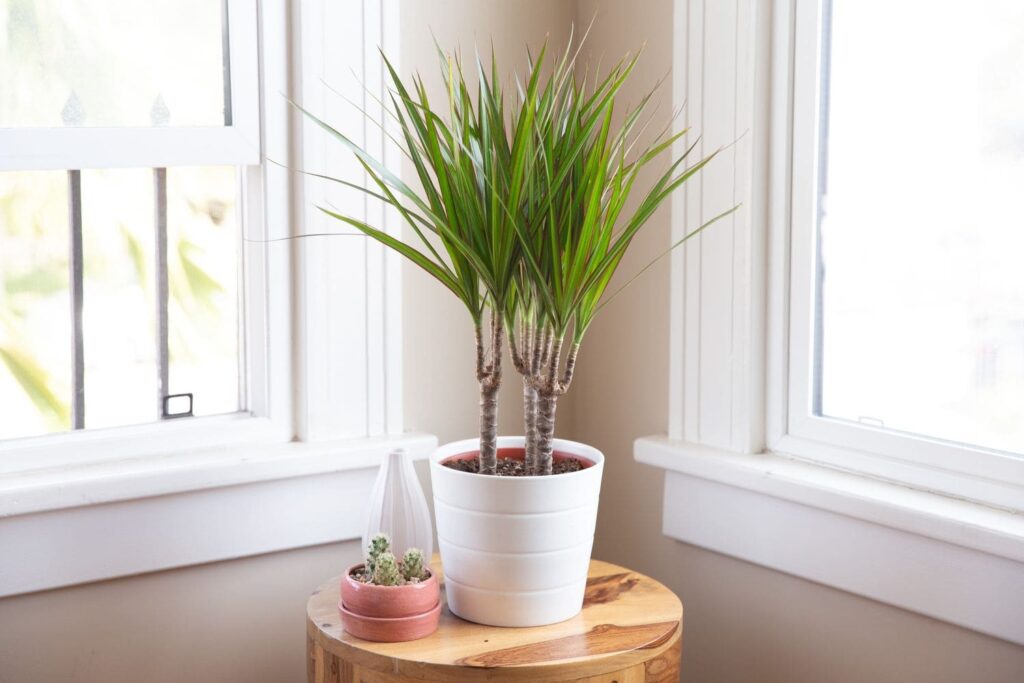

Dracaena is a good houseplant because it is one of the easiest plants to maintain. These plants love sunlight but do not require to be exposed under it most of the time, and they can survive days without being watered.
They can also thrive in pots, which is why they’ll have no problems in both outdoor and indoor settings.
The only thing you need to remember is that they don’t like extreme heat and must be placed under light shade if the sunlight is too strong.
Is the dragon tree a Dracaena plant?
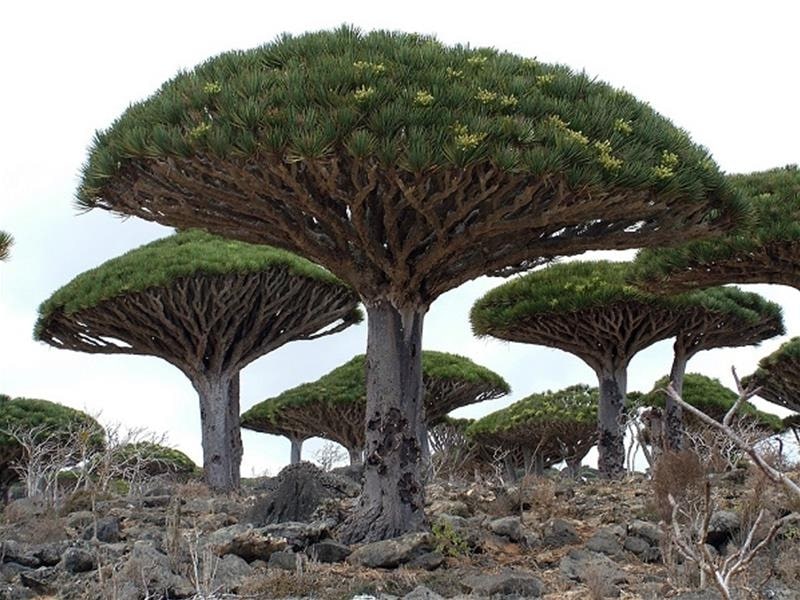

The dragon tree is a variant of Dracaena which is native to the lands of West Morocco and the Canary Islands.
Dragon trees are capable of growing up to 15 meters and at least 6 meters wide. Unlike other types of Dracaena which are smaller and can thrive in a house setting, dragon trees are more suitable to be planted in your backyard.



